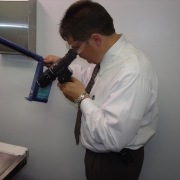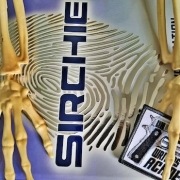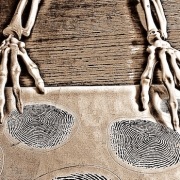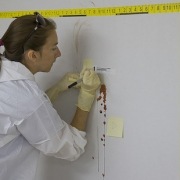When Luminol Isn’t Quite Enough, Amplify It! Here’s How It’s Done …
Any writer, reader, and fan of mysteries, thrillers, suspense, and other books and television shows and film that involves crime scene investigation, will most likely have heard of Luminol, the chemical that causes chemiluminescence.
Chemiluminescence, the vivid bluish glow we’ve seen on countless crime shows, occurs when Luminol contacts an oxidizing agent such as the hemoglobin found in blood. Other agents can cause a similar reaction (copper, bleach, etc.), but it is blood that causes the most vivid glow. And it is this reaction that is of particular interest both real and fictional investigators.
Even bloody footprints reveal themselves when exposed to luminol.
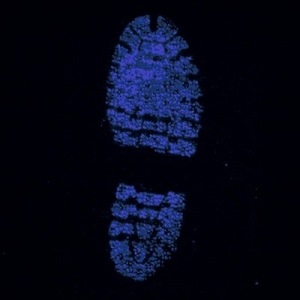
Sirchie, the world leader in crime scene investigation technology and products, describes Luminol as:
“Luminol is a chemiluminescent substance that can be used as a presumptive test for the presence of blood. Making use of the peroxidaselike activity of the heme portion of hemoglobin, Luminol produces a bluish-white light that can be viewed in total darkness. Invisible blood stains react with the Luminol reagent by luminescing—darkness is essential. It can also be photographed or videotaped with the aid of the SIRCHIE® KRIMESITE™ IMAGER. A very useful test for searching large areas for blood especially if the area has been cleaned up. Sensitivity:1:100,000.”
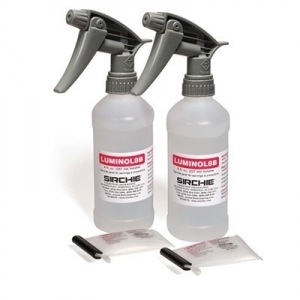
Sirchie’s LUMINOL8 Contents:
2- LUMINOL 8B bottles of solution, 8 oz. each
2- LUMINOL 8A packets of dry chemicals, Net. Wt. 14.5 gms
2- Spray Head Attachment
*Sirchie image
Blue Star
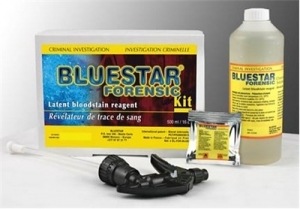
Sirchie’s BLUESTAR Forensic Kit “affords the Crime Scene Investigator a complete tool to determine the presence or absence of blood. The extreme sensitivity of BLUESTAR allows the detection of bloodstains down to 1:10,000 dilutions, including minute traces that have been washed off, with or without detergent. And unlike other blood reagents, total darkness is not required. With practice, it’s unlikely to get confused between blood and false positives as the luminescence is different in color, intensity and duration. Subsequent DNA Typing and ABO Typing is possible because BLUESTAR does not alter the DNA in suspect blood stains.” ~ Sirchie
*Above image ~ Sirchie
Luminol is a presumptive test, not a confirmatory test.

Luminol presents challenges, such as its potential to destroy DNA evidence when contacted, and its glow lasts for just mere seconds. Detectives must be quick with their photography skills!
Therefore, BGU Prof. Alina Karabchevsky, head of BGU’s Light-on-a-Chip Group, a member of the BGU Unit of Electro-Optical Engineering and the Ilse Katz Institute for Nanoscale Science and Technology, came up with a fantastic new idea … a device/chip that combines the use of luminol with gold or silver nanospheres.
Simply put, Dr. Karabchevsky invented a microfluidic chip that not only greatly increases the chemiluminescence intensity of luminol, but also extends its glow time. To sweeten the pot, the chip enables the detection of much smaller blood samples found at potential crime scenes.
“The method developed by BGU researchers will enable development of future detectors with improved sensitivity. We are currently looking for partners for further developing this promising patented invention,” said Netta Cohen, CEO, BGN Technologies.
What is a microfluidic chip?
Easy answer – a device (chip) that enables very small amount of liquid to be processed or visualized.


